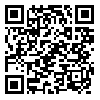BibTeX | RIS | EndNote | Medlars | ProCite | Reference Manager | RefWorks
Send citation to:
URL: http://tumj.tums.ac.ir/article-1-12998-en.html

 , Shahla Mohammad Khani2
, Shahla Mohammad Khani2 
 , Behjat Khorsandi3
, Behjat Khorsandi3 
 , Faezeh Afkhami Aghda4
, Faezeh Afkhami Aghda4 
 , Fateme Moshirenia *
, Fateme Moshirenia * 
 5, Mahdieh Hardani Naeemzadeh2
5, Mahdieh Hardani Naeemzadeh2 

2- Student Research Committee, Shahid Sadoughi University of Medical Sciences, Yazd, Iran.
3- Research Center for Nursing and Midwifery Care, Shahid Sadoughi University of Medical, Yazd, Iran.
4- Department of Aging Health, School of Public Health, Shahid Sadoughi University of Medical Sciences, Yazd, Iran.
5- Student Research Committee, Shahid Sadoughi University of Medical Sciences, Yazd, Iran.| Research Center for Nursing and Midwifery Care, Shahid Sadoughi University of Medical, Yazd, Iran. ,
Background: The type of delivery significantly affects a woman's life and her newborn's health. Various factors, including medical conditions, personal preferences, and cultural influences, shape this decision. Increasing cesarean delivery rates have raised concerns about associated risks. This study examines the health impacts of different delivery types on mothers and newborns in Yazd hospitals, with a focus on maternal and neonatal outcomes.
Methods: This cross-sectional analytical study involved a substantial cohort of 69,321 mothers who delivered in Yazd between March 21, 2018 to March 20, 2022. Comprehensive data were collected from Iman Hospital and relevant online patient records. To analyze the relationship between delivery type and health outcomes, independent samples t test and chi-square test were utilized. Additionally, odds ratios were calculated to assess relative risks concerning various maternal and neonatal outcomes. SPSS 26 software was employed for all analyses, with a significance level set at 5% to ensure robustness in the findings.
|
Results: The average age of participants in the study was 34.45±6.44 years, highlighting a mature population of mothers. Neonatal outcomes indicated that babies delivered naturally were more likely to have unfavorable Apgar scores (ranging from four to six) when compared to infants delivered via cesarean section (CI=0.99-1.55, P=0.05, OR=1.24). Furthermore, naturally delivered infants showed a significantly higher likelihood of having Apgar scores below six (CI=0.90-1.03, P=0.001). Alarmingly, the odds of neonatal death were found to be 1.22 times higher for cesarean births (CI=1.19-1.25, P<0.001). Additionally, mothers who underwent cesarean deliveries exhibited nearly a 4.9 times higher likelihood of requiring intensive care after delivery (CI=4.71-5.12, P<0.001, OR=4.9) and were 14.3 times more likely to be hospitalized postoperatively compared to those who had natural deliveries (CI=3.53-1.31, P<0.001, OR=14.33). |
| Rights and permissions | |
 |
This work is licensed under a Creative Commons Attribution-NonCommercial 4.0 International License. |



